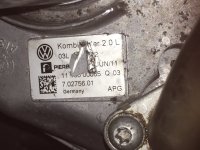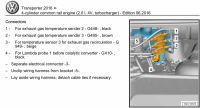D
darrenjane
VIP Member
- Messages
- 29
Hello - after advice on my 61 plate 180
Further to my previous post re PO403 fault code this has now been cleared (by VW dealer over a remote connection from Germany I’m told). However we are now getting EML and PO401 “exhaust gas recirculation “A” flow insufficient detected”. I returned to dealer who advised that as the EGR valve had been replaced it just needed a good run to clear the system and there should be no issues with driving unless red light/ flashing light/ limp mode. I initially had the AA clear the fault. However I’ve now got a carista obd device where I can check and clear faults when the appear. We are currently in the French alps with the vehicle but the EML keeps appearing intermittently. Not on every drive and sometimes self clears and the light goes out. I’m running on bp ultimate diesel as told this may help to clear the system. Appears to drive fine even with amber EML on.
Any thoughts/ ideas appreciated- many thanks
Further to my previous post re PO403 fault code this has now been cleared (by VW dealer over a remote connection from Germany I’m told). However we are now getting EML and PO401 “exhaust gas recirculation “A” flow insufficient detected”. I returned to dealer who advised that as the EGR valve had been replaced it just needed a good run to clear the system and there should be no issues with driving unless red light/ flashing light/ limp mode. I initially had the AA clear the fault. However I’ve now got a carista obd device where I can check and clear faults when the appear. We are currently in the French alps with the vehicle but the EML keeps appearing intermittently. Not on every drive and sometimes self clears and the light goes out. I’m running on bp ultimate diesel as told this may help to clear the system. Appears to drive fine even with amber EML on.
Any thoughts/ ideas appreciated- many thanks


















